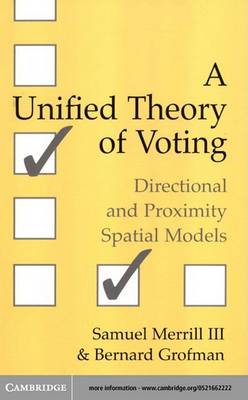This book addresses the questions: how do voters use their own issue positions and those of candidates to decide how to vote? Does a voter tend to choose the candidate who most closely shares the views of the voter or rather a candidate who holds more extreme views due to the fact that the voters discount the candidates' abilities to implement policy. The authors develop a unified model that incorporates these and other voter motivations and assess its empirical predictions - for both voter choice and candidate strategy - in the US, Norway, and France. The analyses show that a combination of proximity, direction, discounting, and party ID are compatible with the mildly but not extremely divergent policies that are characteristic of many two-party and multiparty electorates. All of these motivations are necessary to understand the linkage between candidate issue positions and voter preferences.
- ISBN13 9780511033698
- Publish Date 25 July 2005 (first published 1 January 1999)
- Publish Status Active
- Publish Country GB
- Publisher Cambridge University Press
- Imprint Cambridge University Press (Virtual Publishing)
- Format eBook
- Language English
